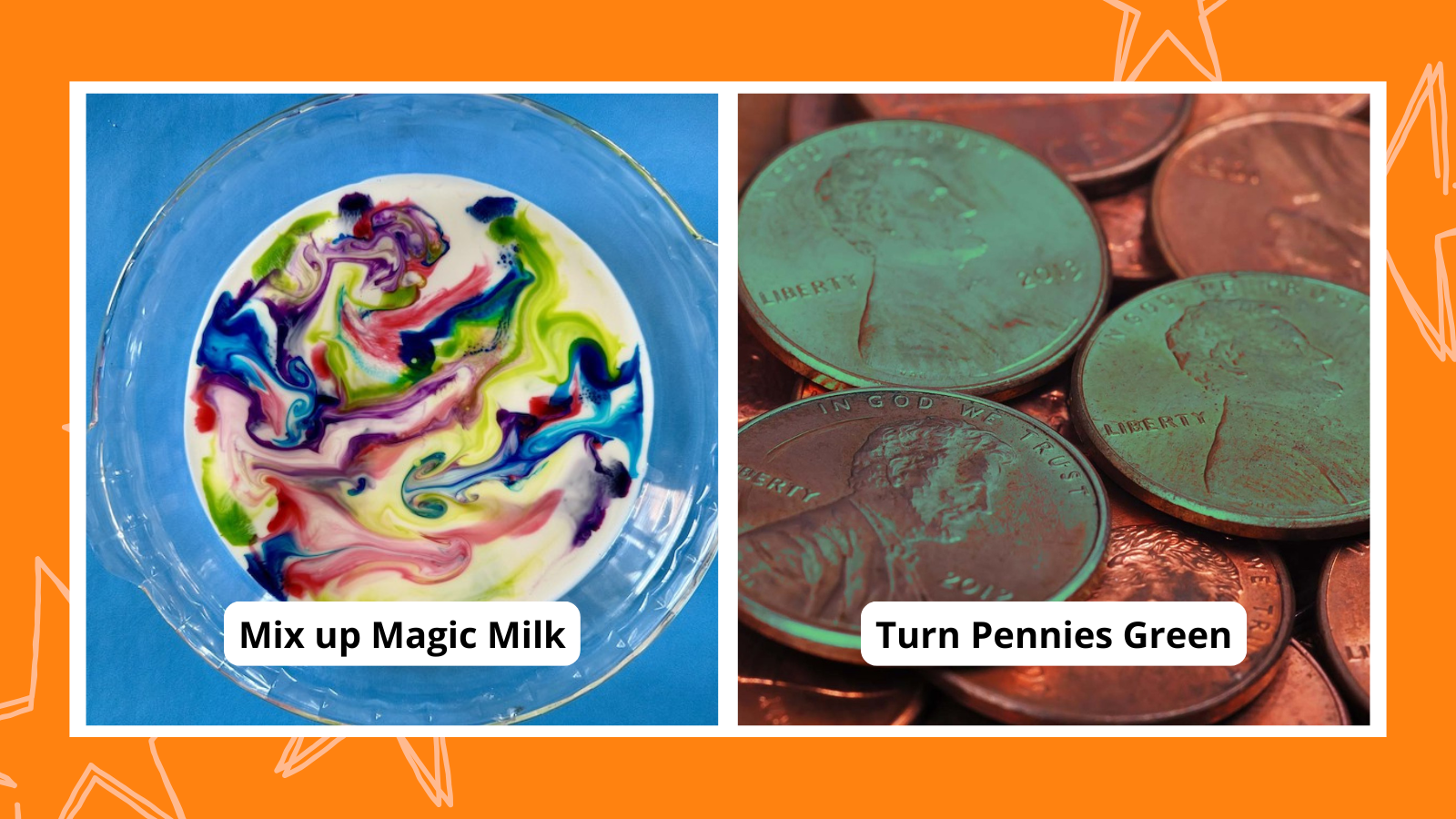Every day is chock-full of new discoveries when you are a kindergartner. These hands-on kindergarten science experiments and activities take advantage of kids’ boundless curiosity. They’ll learn about physics, biology, chemistry, and more basic science concepts, gearing them up to become lifelong learners.
To make things even easier, we’ve rated every one of these kindergarten science experiments based on difficulty and materials:
Difficulty:
- Easy: Low or no-prep experiments you can do pretty much anytime
- Medium: These take a little more setup or a longer time to complete
- Advanced: Experiments like these take a fairly big commitment of time or effort
Materials:
- Basic: Simple items you probably already have around the house
- Medium: Items that you might not already have but are easy to get your hands on
- Advanced: These require specialized or more expensive supplies to complete
Jump to:
Plus, click the button below to receive a copy of our free printable Science Experiment Recording Sheet.

Food Science Experiments for Kindergarten
What better way to dive into the world of science than to play with your food? These food science experiments for kindergartners are sure to grab their interest.
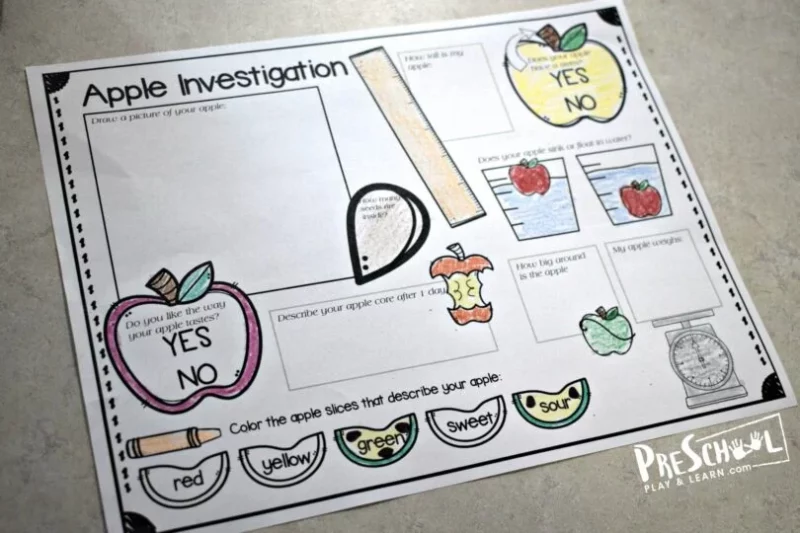
1. Use apples to learn what science is all about
Difficulty: Easy / Materials: Basic
This apple investigation is a great way to start. It encourages kids to examine an apple using a variety of techniques to learn its properties. Get a free printable worksheet for this activity at the link.
Learn more: Apple Investigation
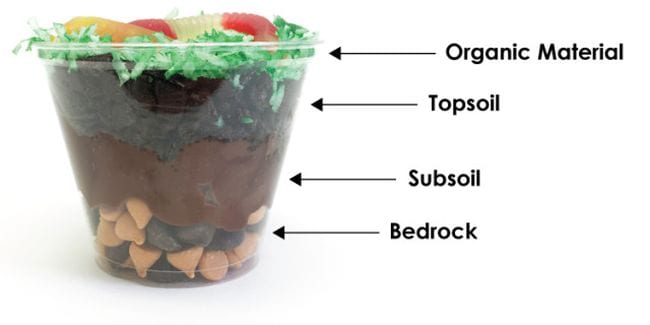
2. Eat your way through soil layers
Difficulty: Easy / Materials: Medium
Layer a variety of foods to represent the soil layers, from bedrock on up. If candy doesn’t fit your school’s nutritional guidelines, use fruits, yogurt, granola, and other healthy options. Either way, the results are scrumptious!
Learn more: Edible Soil Layers
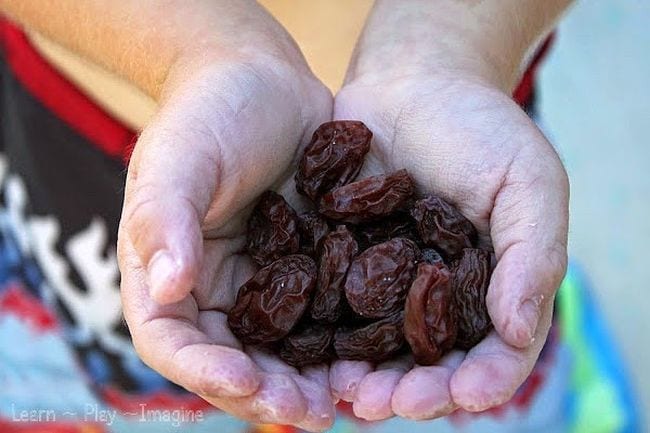
3. Dehydrate your own raisins
Difficulty: Easy / Materials: Basic
Have students dry grapes in the sun over a period of days to see them turn into raisins. Then talk about the process of dehydration as a method of preserving food.
Learn more: Making Raisins

4. Cook up edible glass
Difficulty: Medium / Materials: Basic
Just like real glass, this edible glass is made from tiny opaque grains, but in this case from sugar instead of sand. Cooked and then cooled, it becomes what’s known as an “amorphous solid.” So cool!
Learn more: Edible Glass
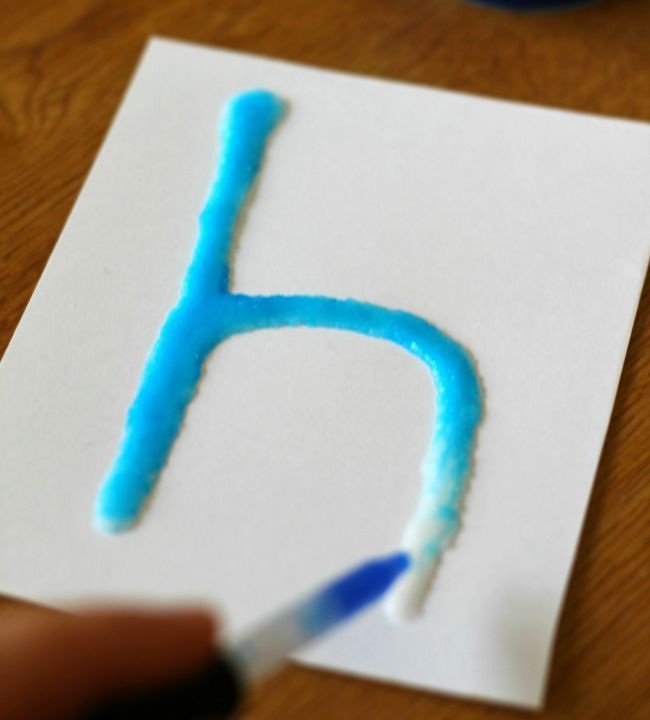
5. Paint with salt
Difficulty: Easy / Materials: Basic
OK, little learners probably won’t remember the word “hygroscopic,” but they’ll enjoy watching the salt absorb and transfer colors in this neat kindergarten science experiment.
Learn more: Salt Painting
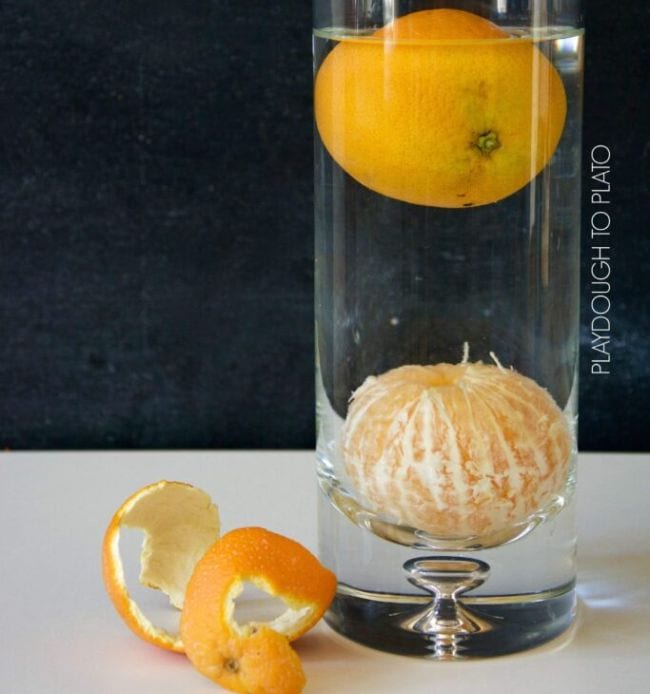
7. Explore buoyancy with oranges
Difficulty: Easy / Materials: Basic
Expand your exploration of buoyancy with this cool demo. Kids will be surprised to learn that even though an orange feels heavy, it floats. That is, until you peel off the skin!
Learn more: Orange Buoyancy
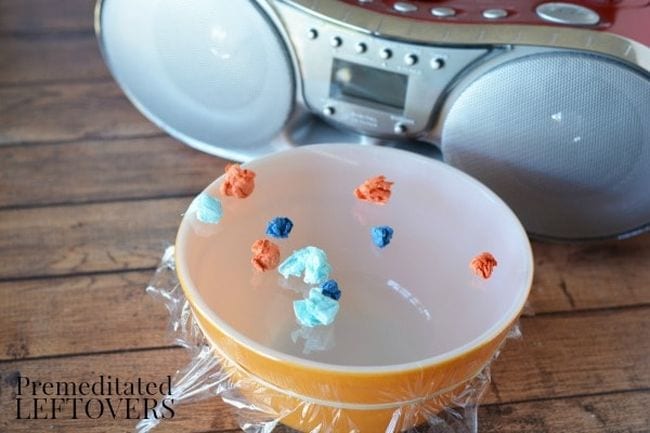
8. Bounce popcorn with sound waves
Difficulty: Easy / Materials: Basic
Sound may be invisible to the naked eye, but you can see the waves in action with this demo. The plastic wrap–covered bowl is the perfect stand-in for an eardrum.
Learn more: Popcorn Sound Waves
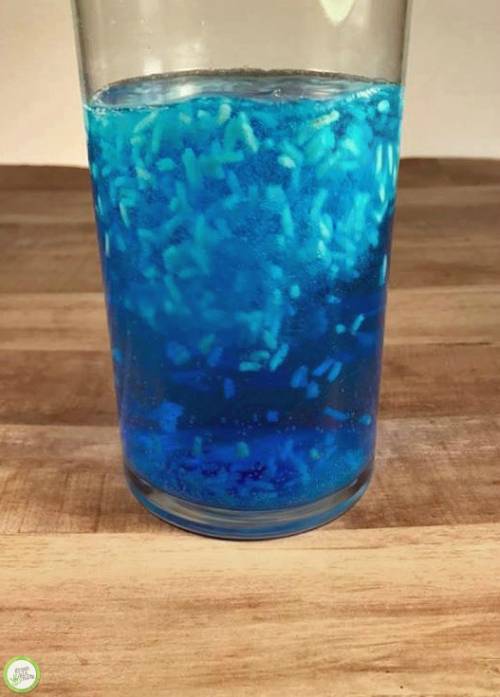
9. Dancing rice
Difficulty: Easy / Materials: Basic
A fun twist on the baking soda and vinegar chemical reaction that will get your kindergartners wiggling. This version showcases colored water and grains of rice.
Learn more: Dancing Rice
10. Grow rock candy
Difficulty: Medium / Materials: Basic
Discover how crystals form by growing your own colorful, edible rock candy through a simple and fun science experiment that demonstrates the process of crystallization.

11. Mix up some ice cream in a bag
Difficulty: Medium / Materials: Basic
Believe it or not, there’s actually a lot of interesting chemistry that goes on behind making ice cream. Try this method and enjoy a delicious treat with your kindergartners afterward.
Learn more: Ice Cream in a Bag
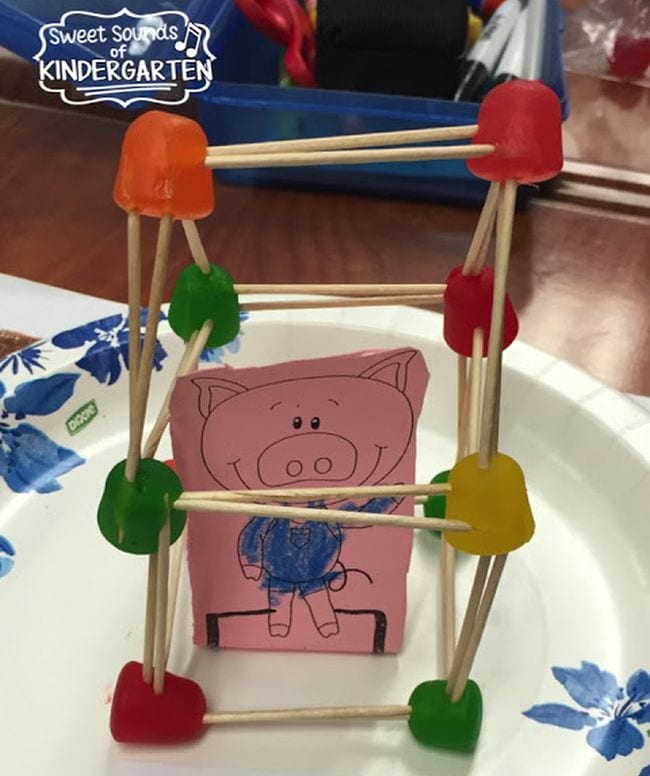
13. Build a Three Little Pigs STEM house
Difficulty: Medium / Materials: Medium
Can your little engineers create a house that protects a little piggie from the Big Bad Wolf? Try this kindergarten STEM challenge and find out!
Learn more: Three Little Pigs STEM Challenge
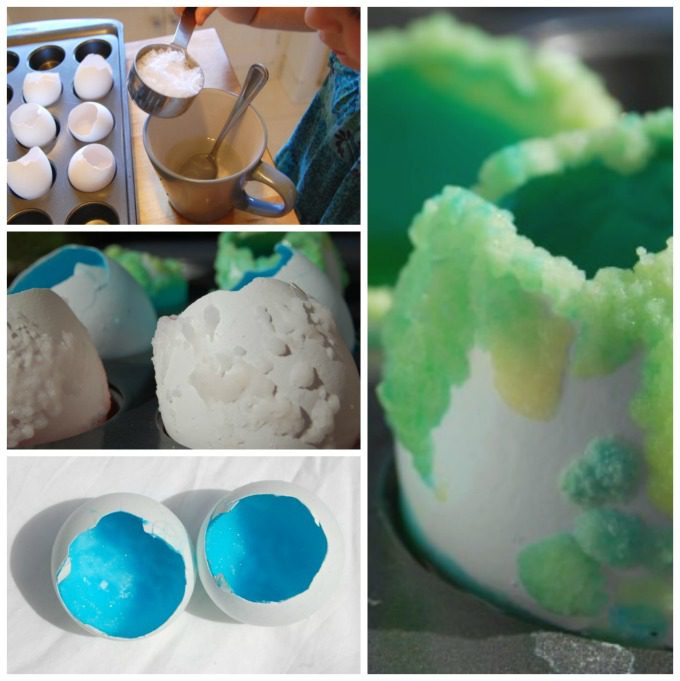
14. Make egg geodes
Difficulty: Medium / Materials: Medium
Engage your students in the steps of the scientific method to create these stunning lab-grown geodes. Compare the results using sea salt, kosher salt, and borax.
Learn more: How To Make Egg Geodes
Water Science Experiments for Kindergarten
Water play is a kindergarten favorite, so use it to engage them in these projects and activities. They make science for kindergarten students to much fun!

15. Change the color of flowers
Difficulty: Easy / Materials: Medium
This is one of those classic kindergarten science activities everyone should try at least once. Learn how flowers “drink” water using capillary action, and create beautiful blooms while you’re at it!
Learn more: Dyed Carnations
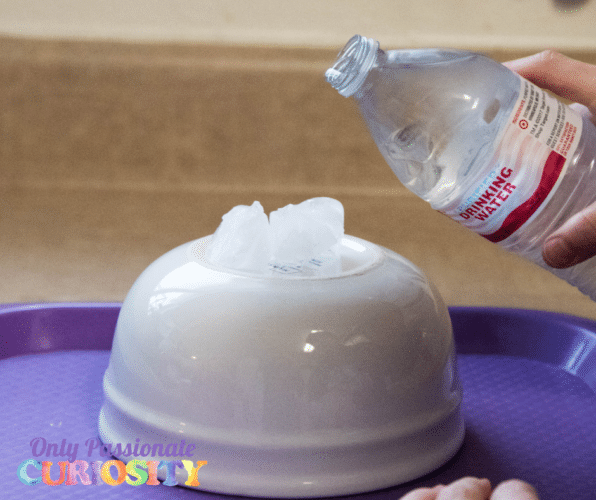
16. Create a tower of instant ice
Difficulty: Easy / Materials: Basic
Place a water bottle in the freezer for a couple of hours, but don’t let it freeze all the way through. Then, pour some of the water onto a couple of ice cubes perched on top of a ceramic bowl and watch a tower of ice form.
Learn more: Instant Ice
17. Assemble a lava lamp
Difficulty: Easy / Materials: Basic
Help your students make their very own lava lamp using simple household ingredients. Then personalize the lamps by adding a couple of drops of food coloring to each bottle.

18. Watch colored water walk
Difficulty: Easy / Materials: Basic
Fill three small jars with red, yellow, and blue food coloring and some water. Then place empty jars in between each. Fold paper towel strips and place them in the jars as shown. Kids will be amazed as the paper towels pull the water from full jars to empty ones, mixing and creating new colors!
Learn more: Rainbow Walking Water Experiment

19. Create a tornado in a jar
Difficulty: Easy / Materials: Basic
As you fill in the weather during daily calendar time, you might have a chance to talk about severe storms and tornadoes. Show your students how twisters form with this classic tornado jar experiment.
Learn more: Tornado in a Jar
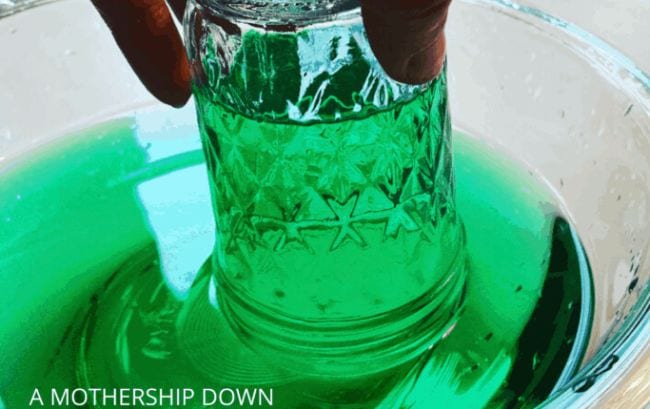
20. Suspend water inside a jar
Difficulty: Easy / Materials: Basic
Lots of kindergarten science activities involve water, which is terrific because kids love to play in it! In this one, show your students how air pressure keeps water in a jar, even when it’s upside down.
Learn more: Water Suspension Experiment
21. Watch popcorn kernels dance
Difficulty: Easy / Materials: Basic
Here’s an activity that always feels a bit like magic. Drop an Alka-Seltzer tablet into a glass of water with popcorn kernels, and watch as the bubbles cling to the kernels and make them rise and fall. So cool!
Learn more: Dancing Popcorn Experiment (With Free Student Printable Recording Sheet)

22. Find out what sinks and what floats
Difficulty: Easy / Materials: Basic
Kids learn about the property of buoyancy and get some practice making predictions and recording the results with this easy experiment. All you need is a container of water to get started.
Learn more: Sink or Float?
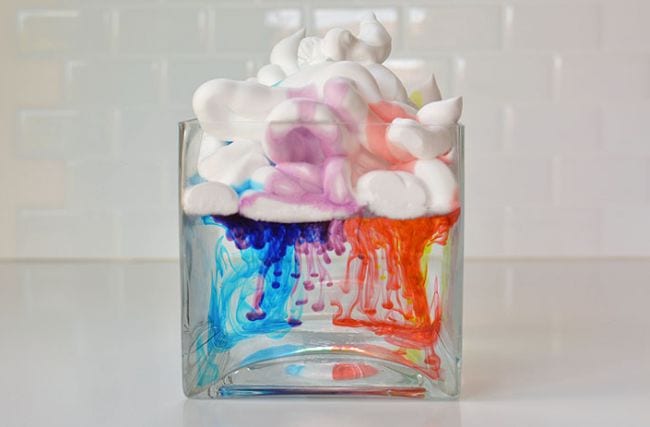
23. Make it rain with shaving cream
Difficulty: Easy / Materials: Basic
Here’s another neat weather-related science experiment. Make shaving cream “clouds” on top of the water, then drop food coloring in to watch it “rain.”
Learn more: Shaving Cream Rain Clouds

24. Bend light with water
Difficulty: Easy / Materials: Basic
Light refraction produces some incredible results. Your students will think it’s magic when the arrow on the paper changes direction … until you explain that it’s all due to the way water bends the light.
Learn more: Light Refraction Activity
Balloon Science Experiments for Kindergarten
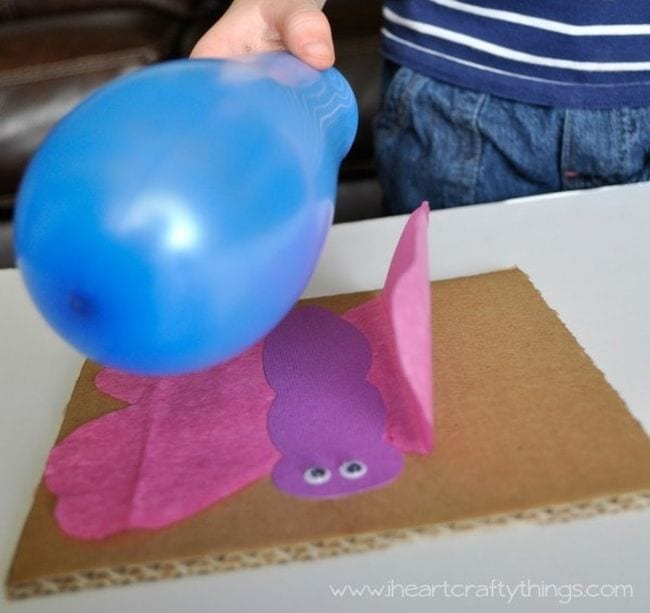
25. Move a paper butterfly’s wings with static electricity
Difficulty: Easy / Materials: Medium
Part art project, part science lesson, all fun! Kids make tissue-paper butterflies, then use the static electricity from a balloon to flap the wings.
Learn more: Static Electricity Butterfly
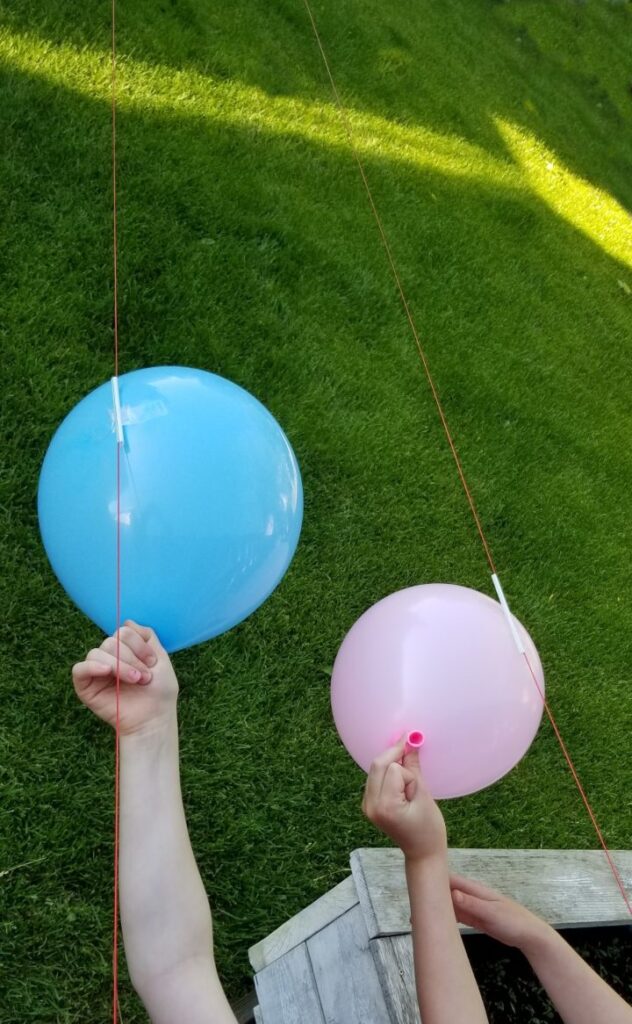
26. Race balloon rockets
Difficulty: Easy / Materials: Basic
Introduce little ones to the laws of motion with easy-to-make balloon rockets. When the air shoots out one end, the balloons will sail off in the other direction. Whee!
Learn more: Balloon Rockets
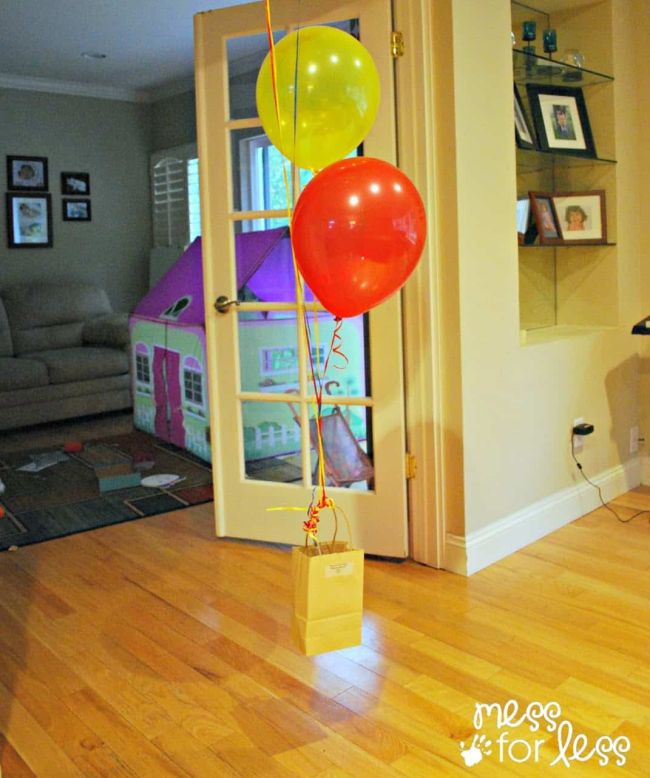
27. Lift a bag with balloons
Difficulty: Easy / Materials: Medium
You’ll need helium balloons for this one, and kids are gonna love it. Ask them to guess (hypothesize) how many balloons it will take to lift various items in a bag attached to the strings.
Learn more: Helium Balloon Experiment

29. Inflate a balloon without blowing into it
Difficulty: Easy / Materials: Basic
Teach your students the magic of chemical reactions using a plastic bottle, vinegar, and baking soda to inflate a balloon. This classic experiment is a wonderful way to explore science for kindergarten kids. Check out more balloon experiments here!
Learn more: Balloon Baking Soda Experiment

30. Blow up your fingerprints
Difficulty: Easy / Materials: Basic
You don’t need a microscope to look at fingerprints up close! Instead, have each student make a print on a balloon, then blow it up to see the whorls and ridges in detail.
Learn more: Balloon Fingerprints
More Kindergarten Science Experiments
We’ve got even more ideas about teaching science to kindergarten students here, from plant and dirt science to static electricity and more.
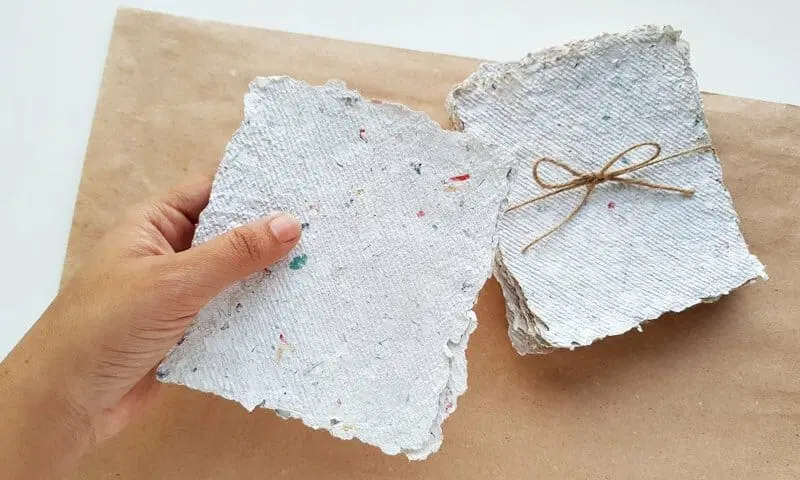
31. Craft some recycled paper
Difficulty: Medium / Materials: Medium
Teach your kindergartners how to transform something old into something new. Use scrap paper, old newspapers, and magazine pages to create beautiful handcrafted paper.
Learn more: Homemade Paper
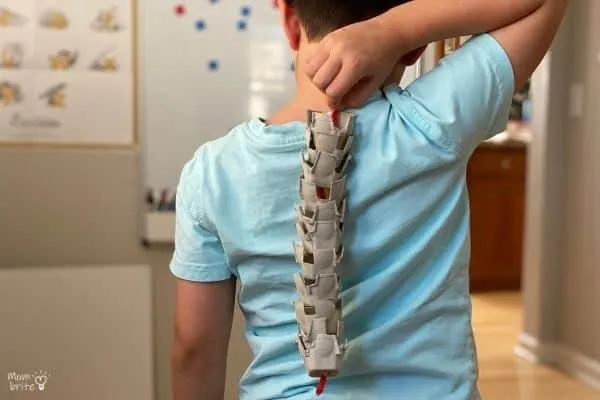
32. Create a model of the human spine
Difficulty: Easy / Materials: Basic
Kindergarten science students love to learn through play. Make this simple egg carton spine model to encourage your students’ interest in the human body and how it works.
Learn more: Spine Model
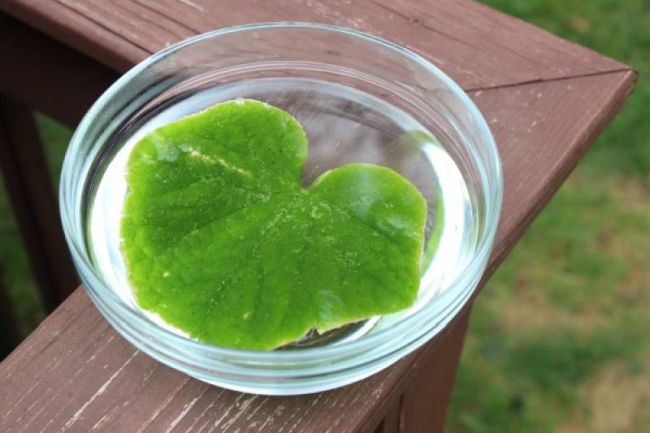
33. Discover how plants breathe
Difficulty: Easy / Materials: Basic
Kids might be surprised when you tell them that trees breathe. This kindergarten science experiment will help prove it’s true.
Learn more: Leaf Transpiration
34. Learn how germs spread
Difficulty: Easy / Materials: Basic
There’s never been a better time to add a handwashing experiment to your list of kindergarten science activities. Use glitter as a stand-in for germs, and learn how important washing your hands with soap really is.
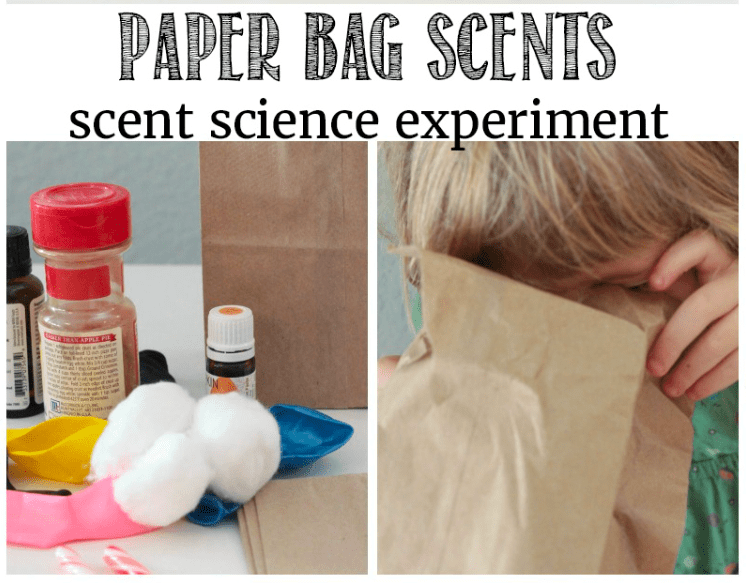
35. Explore the properties of mystery items
Difficulty: Easy / Materials: Basic
Mystery bags are always a hit with kids. Tuck a variety of objects inside, then encourage kids to feel, shake, smell, and explore as they try to determine what the items are without looking.
Learn more: Guess That Scent Science Experiment

36. Play with fizzing ice cubes
Difficulty: Easy / Materials: Basic
While kinders may not entirely understand the concept of acid-base reactions, they’ll still get a kick out of spraying these baking soda ice cubes with lemon juice and watching them fizz away!
Learn more: Fizzing Ice Cubes
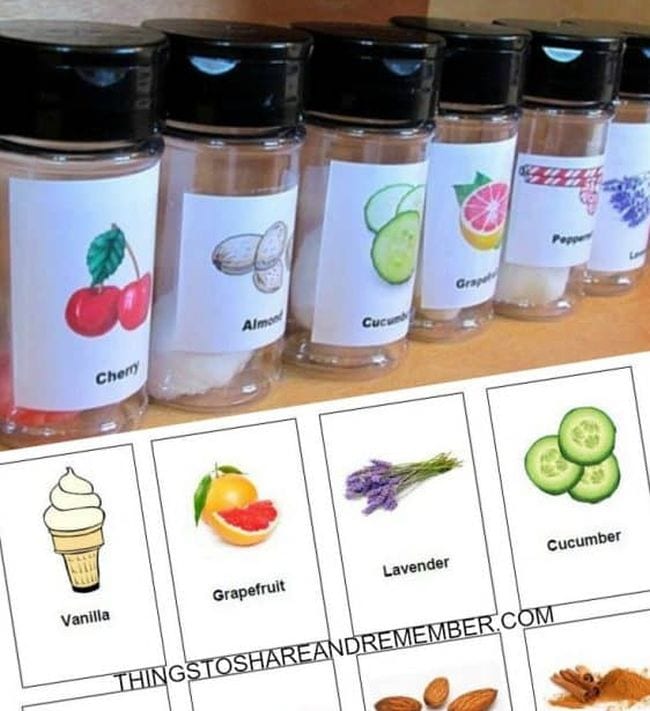
37. Sniff scented sensory bottles
Difficulty: Easy / Materials: Medium
Here’s another way to engage the senses. Drop essential oils onto cotton balls, then seal them inside spice bottles. Kids sniff the bottles and try to identify the smell.
Learn more: Smelling Sensory Bottles
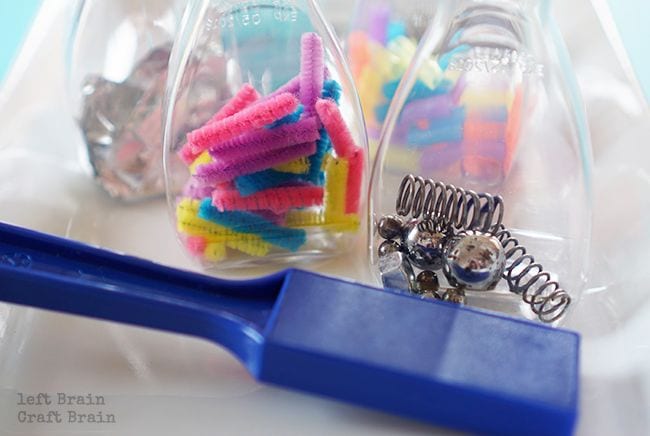
38. Play with magnets
Difficulty: Easy / Materials: Medium
Magnet play is one of our favorite kindergarten science activities. Place a variety of items into small bottles, and ask kids which ones they think will be attracted to the magnets. The answers may surprise them!
Learn more: Magnet Jars

39. Waterproof a boot
Difficulty: Easy / Materials: Basic
This experiment lets kindergartners try their hand at “waterproofing” a boot with a variety of materials. They use what they already know to predict which materials will protect the paper boot from water, then experiment to see if they’re right.
Learn more: Waterproof a Boot
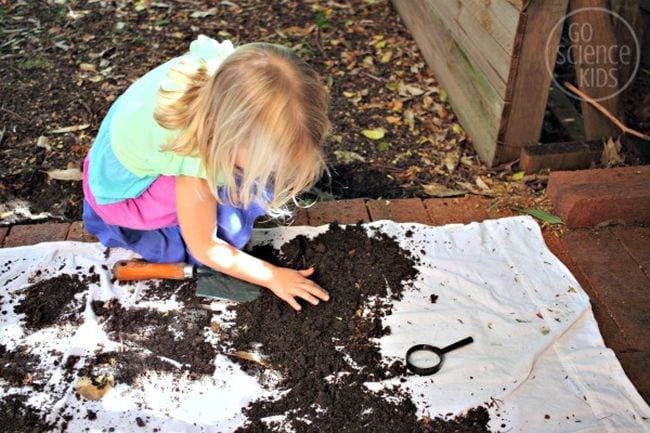
40. Get your hands dirty
Difficulty: Easy / Materials: Basic
Ready to explore soil science? Scoop up some dirt and examine it more closely, looking for rocks, seeds, worms, and other items.
Learn more: Dirt Science

41. Mix up some Oobleck
Difficulty: Easy / Materials: Basic
Perhaps no book leads so perfectly into a science lesson as Dr. Seuss’ Bartholomew and the Oobleck. Just what is Oobleck? It’s a non-Newtonian fluid that looks like a liquid but takes on the properties of a solid when squeezed. Weird, messy … and so much fun!
Learn more: How To Make Oobleck

42. Grow crystal letters
Difficulty: Easy / Materials: Basic
No list of kindergarten science activities would be complete without a crystal project! Use pipe cleaners to make the letters of the alphabet (numbers are good too), then grow crystals on them using a supersaturated solution.
Learn more: Crystallized Letters
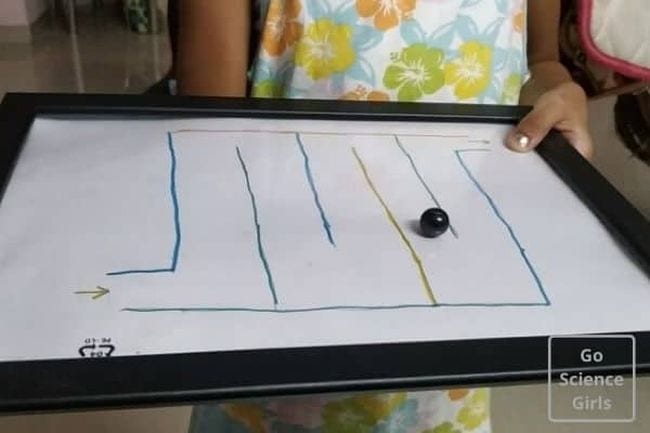
43. Play a marble maze game
Difficulty: Easy / Materials: Medium
Tell kids they’re going to move a marble without actually touching it, and watch their eyes widen in surprise! They’ll have fun drawing mazes to guide a metal marble through with a magnet from underneath.
Learn more: Magnet Marble Maze

44. Germinate a seed
Difficulty: Easy / Materials: Basic
There’s something about seeing a seed develop roots and shoots with your very eyes that’s just so incredible. Sprout bean seeds in paper towels inside a glass jar to give it a try.
Learn more: Seed Germination Experiment

45. Mix up a batch of elephant toothpaste
Difficulty: Moderate / Materials: Basic
Who knew toothpaste could be so fun? Simple and astounding, the main ingredients for this cool experiment are yeast, hydrogen peroxide, and dish soap.
Learn more: Elephant Toothpaste Experiment (Plus Free Worksheet)
46. Experiment with slime
Difficulty: Easy / Materials: Basic
Slime is one of those irresistible things kids love! We tested four unique formulations to see how they turned out. Find your favorite and get creating!
Learn more: How To Make Slime (Plus Worksheet)

47. Learn about density in a fun way
Difficulty: Easy / Materials: Basic
Different liquids have different densities, and when you mix them all together in a glass jar, they separate into pretty layers.
Learn more: Layers of Liquid Density Experiment

48. Build a catapult
Difficulty: Easy / Materials: Basic
Build a simple machine—a catapult—using craft sticks, a plastic spoon, and rubber bands. Your students will have a fun time seeing how far they can fling objects across the room.
Learn more: Craft Stick Catapult
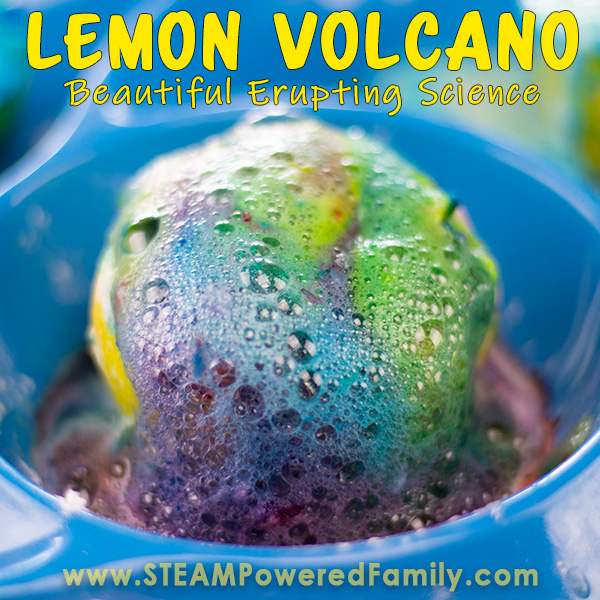
49. Watch a lemon volcano erupt
Difficulty: Moderate / Materials: Basic
Create a chemical reaction with natural materials with this fun twist on the baking soda vinegar version. Roll a few lemons to get the juices flowing, then add the rest of the ingredients (including a variety of pretty food coloring) and watch the lava flow.
Learn more: Lemon Volcano
50. Create 3D art with a salt pendulum
Difficulty: Easy / Materials: Basic
Learn about the science of swinging with a funnel pendulum on a string, and create an art project of beautiful swirls of colored salt.
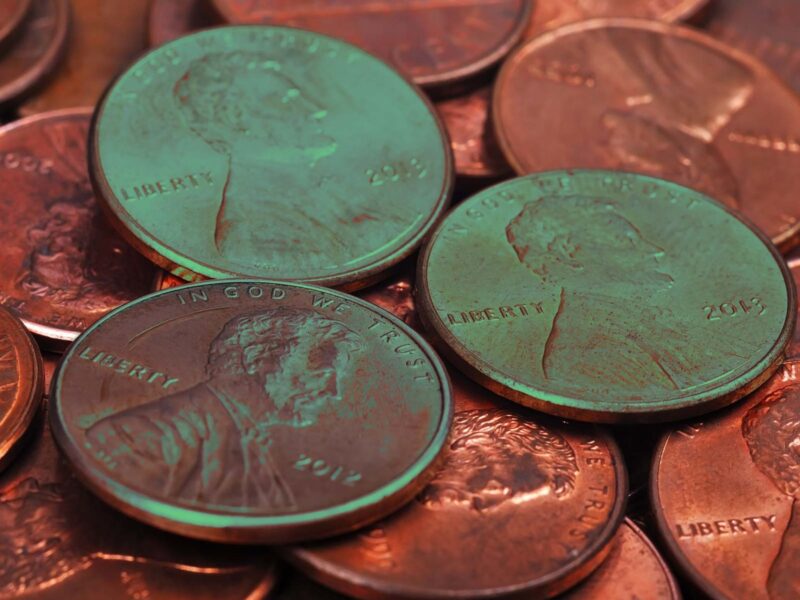
51. Turn pennies green
Difficulty: Easy / Materials: Basic
This awesome experiment leads you through three steps: shining up pennies, turning them green, and turning them dark brown.
Learn more: Turn a Penny Green
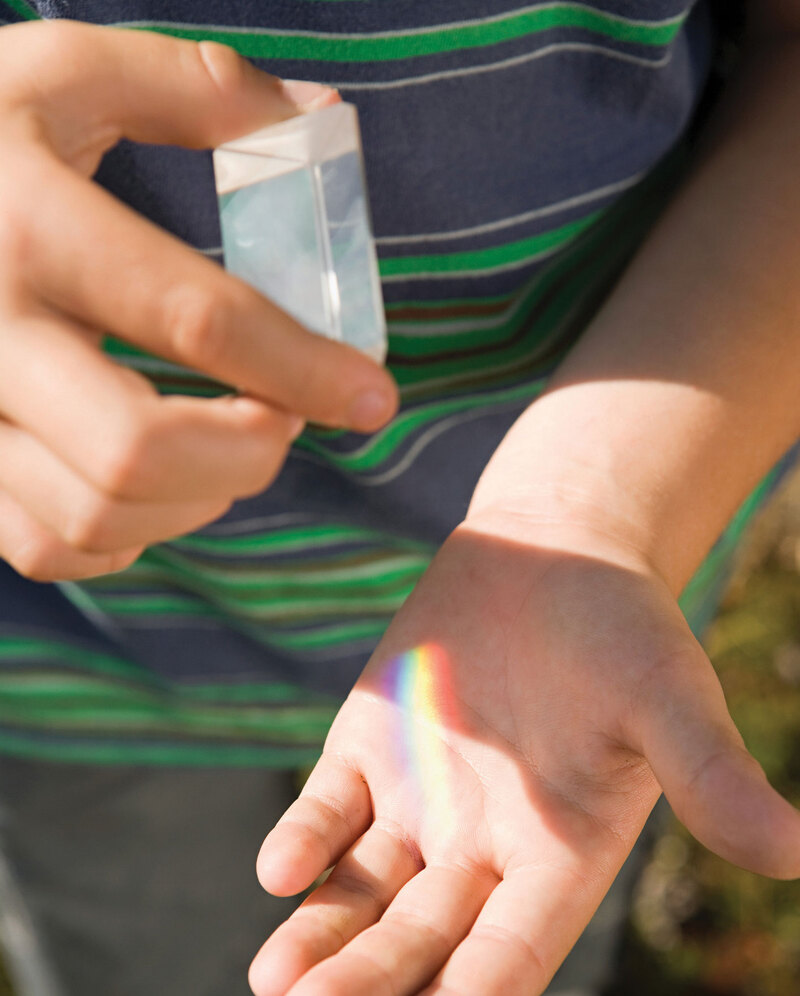
52. Explore prisms
Difficulty: Easy / Materials: Basic
Imagine creating a rainbow from a simple piece of glass and a ray of sunshine. Your kids will love this simple activity. After they explore with the prisms for a while, get out the paper and crayons and let them create their own.
Learn more: Prism Rainbows
53. Demonstrate the power of a pulley
Difficulty: Easy / Materials: Simple
Introduce your kindergartners to another simple machine, the pulley, with this simple activity. All you need is a rolling pin, two chairs, and some string. Gather a few items from around the classroom to experiment with the pulley’s lifting power.

54. Defy gravity with magnets
Gravity is a fascinating topic and a hard one to understand. This simple activity involves metal paper clips and their attraction to magnets.
Learn more: Paper Clip Gravity Activity
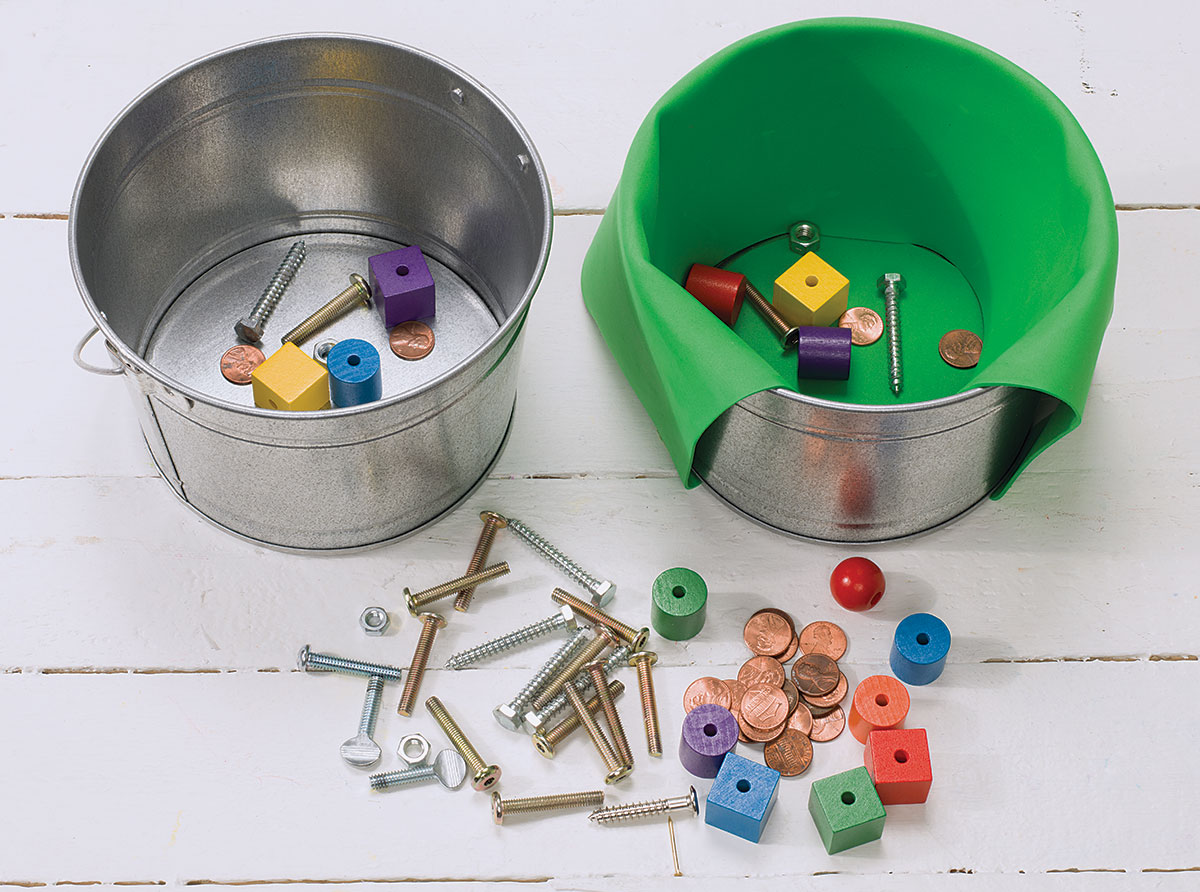
55. Create echoes
Difficulty: Easy / Materials: Basic
Drop a variety of objects of different sizes, shapes, and materials into a tin bucket and see if you can hear the difference in the sound each object makes. Try the experiment again, this time with the sound muffled by a cloth in the tin bucket.
Learn more: Sound Science
Get my free printable

If you liked these science activities for preschoolers, grab a copy of our free printable recording sheet for your students, which can be used with any of the science experiments above.

